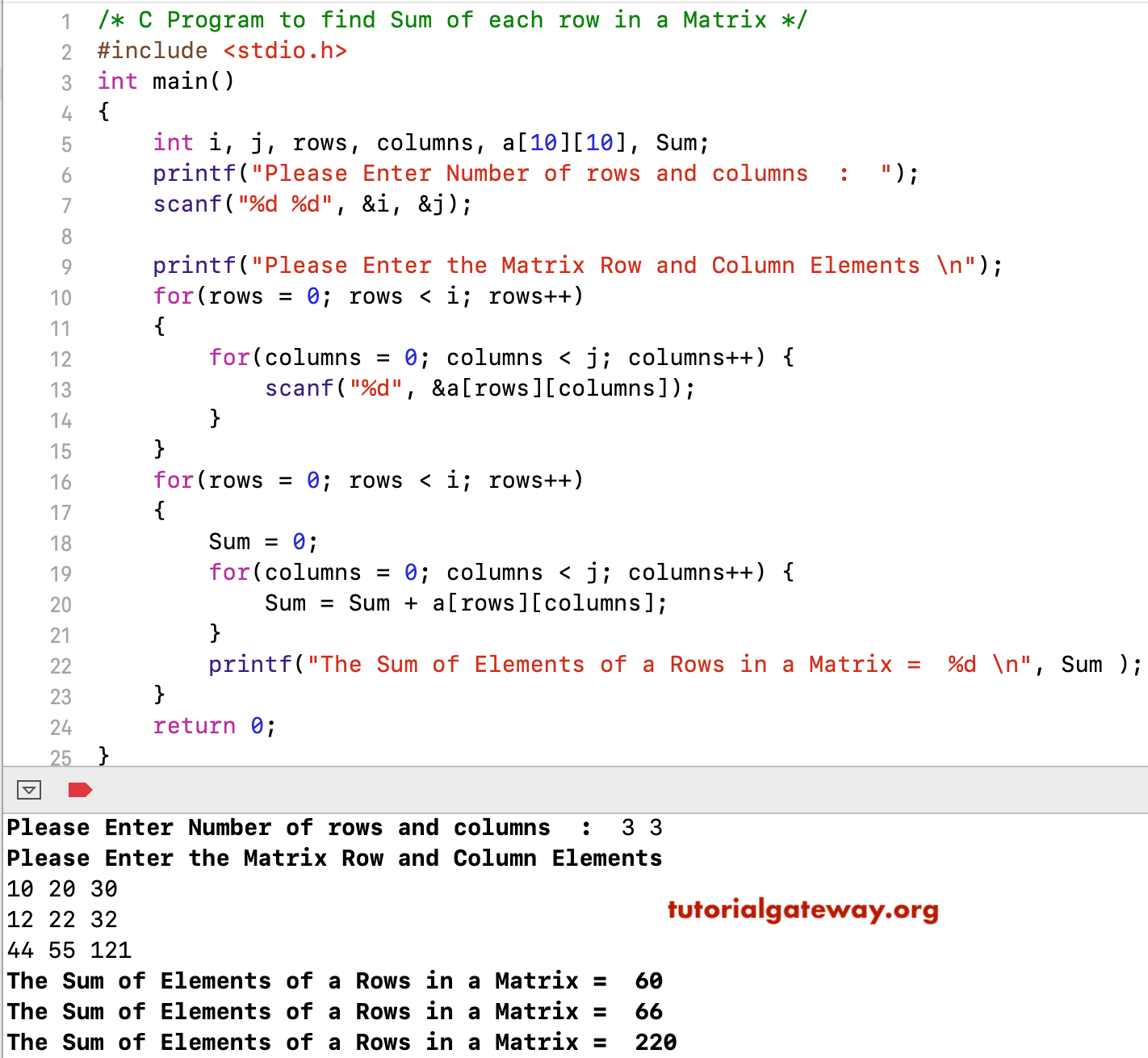

To find the sum, minimum, maximum, mean, standard deviation and variance respectively we use the following commands: In a similar manner np.absolute, np.sqrt and np.exp return the matrices of absolute numbers, square roots and exponentials respectively. We get a matrix of Booleans where True indicates that the corresponding element is greater than 25 and False indicates that the condition is not satisfied. For instance, to check if the elements of B are more than 25 we write: In order to obtain if a condition is satisfied by the elements of a matrix we need to write the criteria. We get the matrix of the square of all elements of B. The resultant is the matrix of all sin( ) elements. We can have various trigonometric functions like sin, cosine etc. G #resize modifies the original array array(, Similar to 1D arrays, using resize( ) will modify the shape in the original array. G.reshape(3,-1) # returns the array with a modified shape Writing -1 will calculate the other dimension automatically and does not modify the original array. To change the shape of 2D array we can use reshape. To get a flattened 1D array we can use ravel( )

Np.eye(5,dtype = "int") array(,īy default the datatype in np.eye( ) is 'float' thus we write dtype = "int" to convert it to integers. To create an identity matrix we can use np.eye( ). To create a diagonal matrix where the diagonal elements are 14,15,16 and 17 we write: To create a diagonal matrix we can write np.diag( ). We can create a 3 * 3 matrix of all ones by: To create a matrix of unity we write np.ones( ). Note: The results may vary everytime you run np.empty. To get a matrix of all random numbers from 0 to 1 we write np.empty. To change it to integer we write 'dtype = np.int16' For a zero matrix the default dtype is 'float'. To create a matrix of all zeros of 2 rows and 4 columns we can use np.zeros( ): Numpy provides the utility to create some usual matrices which are commonly used for linear algebra. Note that the above command does not modify the original array. If we want to change the value of all the elements from starting upto index 7,excluding 7, with a step of 3 as 123 we write: Note that in x elements starting from 2nd index up to 5th index(exclusive) are selected. If we want to extract 3rd element we write the index as 2 as it starts from 0.

float64 refers to number with decimal place.Similarly, int16 implies number can be in range -32768 to 32767 int32 refers to number without a decimal point.Initially datatype of 'a' was 'int32' which on modifying becomes 'float64'. Np.array( ) has an additional parameter of dtype through which one can define whether the elements are integers or floating points or complex numbers.Ī = np.array(,dtype = "float") Absence of square bracket introduces an error.

Notice that in np.array square brackets are present. Using numpy an array is created by using np.array: Reshapes the array without changing the original shape Type of elements in the array, i.e., int64, character Size of the array (Number of rows and Columns) Some of the common functions of numpy are listed below. To make it easier an alias 'np' is introduced so we can write np.function. If alias is not provided then to access the functions from numpy we shall write numpy.function. It is a general approach to import numpy with alias as 'np'. Importing numpy can be done by running the following command: Firstly you need to import the numpy library.


 0 kommentar(er)
0 kommentar(er)
